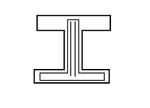High Court (Pitz)
 | |
| Organising body | Mutulese Pitz Secular Rectorate |
|---|---|
| Founded | 1910 (officially) 1916 (as High Court) |
| Country | France |
| Number of teams | 20 |
| Level on pyramid | 1 |
| Relegation to | Lower Court |
| Domestic cup(s) | Ajawje |
| League cup(s) | Ek'je |
| International cup(s) | K'anol Halaab |
| Current champions | PC Petexbat (2nd title) (2018–19) |
| Most championships | Sokonek (13 titles) |
| TV partners | List of broadcasters |
The High Court is a Mutulese professional league for men’s Pitz clubs. At the top of the Mutul’s Pitz Courts system, it’s the country’s primary Pitz competition. Administrated by the Pitzalk’in Temple, the High Court is contested by 20 clubs and operate on a system of promotion and relegation with the Lower Court.
Clubs play two matches against each of the other teams in the league – once home and once away – totalling to 38 matches over the course of the season. The PC Sokonek is the most successful club with 13 High courts won while the PC Lakamha is the club that has won the most consecutive titles (seven between 2004 and 2011). With the presence of 91 seasons in the High Court, PC Tanjuij hold the record for most season among the elite while the PC K’uhul Mul hold the record of longevity with 52 consecutive seasons. The current champion is the PC Petexbat who won their second title in the 2018-2019 season.
History
After 1840 and the reforms making the use of a Pitz match as an ordeal unreceivable in a court of law, It became less useful for the noble houses to keep under their service special Pitz teams. Nonetheless, the sport remained popular and many Batabs, high priests, or Yajaws kept under their service a Pitz team, with Pitz matches remaining a strong popular distraction during festivities and religious events.
Soon, teams started to create Circuits, competitions, and local tournaments, the most famous of which was the Ben Zoa Circuit, where some of the best players of their time played. Local religious institutions were tasked with the arbitrage and while rules differed slightly from circuit to circuit, they still shared a lot in common and were collectively known as the “Janab’ Pakal II” Pitz.
In 1871, the Pitzalk’in Temple, the reputed institution in charge of forming and regrouping Pitz referees for the Ben Zoa Circuit, published a project of reform of the Pitz rules, aiming at a democratization and global diffusion of the sport. They immediately applied the rules in their circuits, and while the project received no royal support nor was it received favorably by other major circuits, it was nonetheless adopted by some but also at the internationale, in Sante Reze and Benaajab. In 1902, the K’uhul Ajaw Sak K’uk II finally gave her approval of the project, which then became the new, harmonized, ruleset for all Pitz circuits.
In 1903, the first inter-circuits competition took place, and it led to the reform of many of the smaller circuits to compete with the “Majors”. In 1909, the same Majors unified into the Pitz Secular Rectorate, later renamed the Mutun Pitz Secular Rectorate, soon followed by the smaller circuits, finally unifying by 1910 all of the Pitz teams into one single, national, federation.
The Rectirate’s inaugural season of the national circuit, called the Jade Court, was held in 1910 - 1911. The 20 inaugural clubs were those that, through their results, were considered to be the best and most reputed teams of their time. The 20 clubs were inserted into two groups of 10 with the bottom three of each group suffering relegation to the Golden Court. The two winners of each group would then face each other in a final held at a neutral venue. National athletic events were momentarily suspended during the Belfro-Mutulese War of 1911, and only resumed in 1916. It let the time to the institutions to rethink the model of the competition. In 1916-1917, the first season of the now renamed High Court and Lower Court took place, with 20 teams each. In total, 5 divisions of national were implemented, with two of them opened to semi-professional teams.
Since then, the High Court has taken place each year uninterrupted, for a total of 102 seasons in 2019.
Competition format
There are 20 clubs in the High Court. During the course of a season, usually from August to May, each club plays the others twice, once at their home stadium and once at that of their opponents, for a total of 38 games, though special circumstances may allow a club to host matches at other venues. Teams receive three points for a win and one point for a draw. No points are awarded for a loss. Teams are ranked by total points, then by the number of circle scored. At the end of each season, the club with the most points is crowned champion. If there is a tie for the championship, for relegation, or for qualification to other competitions, a play-off match at a neutral venue decides rank.
Clubs
A total of 81 clubs have played in the High Court from its foundation to the start of the 2012-2013 season.
Internationally, the most well known clubs playing in the High Court are the PC Sokonek, K’uhul Mul, Lakamha, Tanjuij, and Tuztib’a.